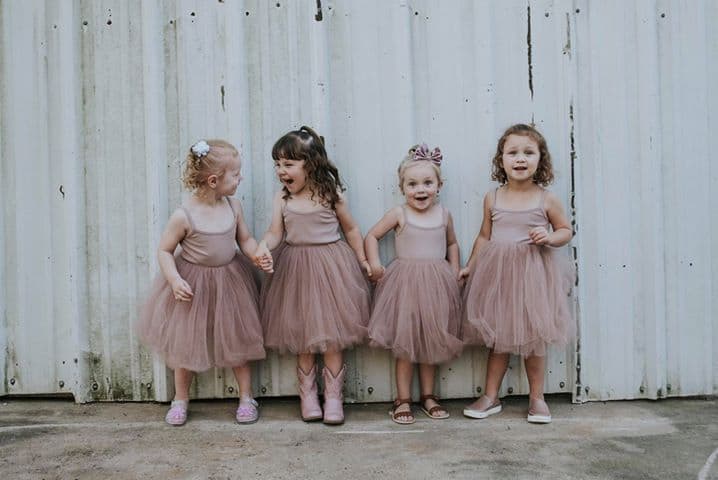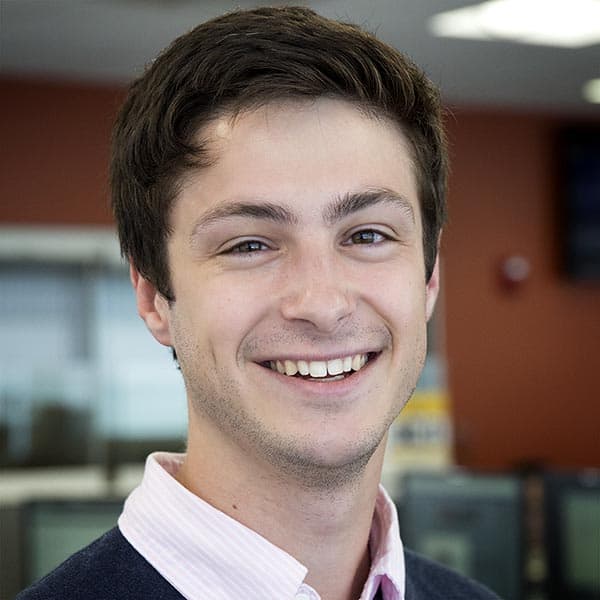Advertisement
'Diblings': Embracing The Sperm Donor Sibling Network And Building Kinship
You’ve heard about adult children conceived with donor sperm who might want to track down their biological roots, find the donor. There’s now a new trend: tracking down your so-called "diblings" — half-siblings from the same sperm donor. And parents are doing the tracking, sometimes from the moment of conception.
Parents are creating "random families" — kin with genetic strangers — hoping to give their children social advantages in this move toward more transparency in the process.
"Sperm donation has been a lot like adoption in America, where for many generations it was something that was kind of a one-time transaction that you never really talked about again, or maybe never talked about in public," Ashley Fetters, staff writer for The Atlantic, told On Point. "Parents didn't tell their friends, kids didn't usually meet their biological families and most donors stayed anonymous forever."
These days, however, more parents are up front about their decision to conceive through donor sperm, and donors are more open to releasing biographical details so that they can be contacted by their offspring.

In 2010, out of 4 million babies born, some 30,000 to 60,000 were donor-conceived, just about 1 percent, Fetters says. It's relatively uncommon by that metric — but, at least anecdotally, seems more common eight years later.
On Point heard from parents who have built large donor families, parents who haven't told their children about their donors and everyone in between.
"My son was born in April of 2015. When we were in the hospital — my wife had a C-section — I was pumped up on adrenaline, I was sitting with him in my arms at four or five in the morning and I was watching the sun rise over the Charles River, and all of the sudden I had this really deep sense of curiosity about the families who had chosen the same donor to conceive of their children," our guest, Jordan Namerow, said. "Really it was within his first week of life that I thought, 'What kind of community is out there?' "
This open approach from birth contrasts with the story from our listener, Dave, in Green Bay, Wisconsin, who has not told his 18-year-daughter she was conceived through sperm donation.
Advertisement
"Basically my wife and I were torn," said Dave, who opted for sperm donation after getting cancer. "I was sort of in the favor of doing it, she was not, and I'm honoring her wishes. However, at some point in time, do we tell her? How does she find out? She's a very well balanced child, but is it difficult on children when you tell them at such an older age? Granted, in 2000 a lot of this wasn't quite as out or as popular as it is now. So what should we do?"
Rosanna Hertz, co-author of "Random Families: Genetic Strangers, Sperm Donor Siblings, and the Creation of New Kin," has some advice: disclose the information.
"Children are pretty resilient," she said. "You will always be her dad, regardless of whether or not she shares genes with a donor. And the reality is she can find out today on her own."
On Facebook, listener Nicole McMorrow wrote to us explaining her annual donor family meetups. (There are pictures, too.)
"We met up in Dallas last year and all the kids wore 'Diblings do Dallas' tees," McMorrow said.
While there is growing consensus around the parental preference to link children conceived by common donors, there is still the issue of involuntary participation. Parents who choose to build genetic families for their kids do so without their permission at such a young age.
This lack of input extends to the terminology and culture, says our listener Rob, who was conceived through sperm donation and is an admin on a number of Facebook groups about the topic.
"Often, we find recipient parents have major hang-ups about offspring connecting with the actual donors," he says. "Anonymity is still very much encouraged in many of these communities. And yet — they want their children to connect with 'diblings.' It’s like they want to have their cake and eat it too. 'Genetics are important — but only for siblings. I’m the child’s parent and some sperm donor is not ever going to change that.'
"You can’t say the genetic connection diblings have is important and the genetic connection the donor and the offspring have isn’t."
Rob also says that many children of donors "detest" the term "dibling." "It’s a made-up term that adult parents using reproductive technologies have come up with. From our perspective, it downplays the fact that we very much are biological siblings with these people."
On Point also heard from listener Amy Dorfman, who used a donor and is part of a family group of over 50 people.
In fact, she wrote the (children's) book on the subject: "I've Got Dibs!: A Donor Sibling Story."
"I wrote the book simply because there weren't any on the topic," Dorfman told On Point. "I went on Amazon trying to find one for my daughter when she was around 5, and I couldn't find anything. I had a friend who was a great illustrator so I decided to forge ahead and write and publish one myself."
The benefits that parents like Dorfman hope will come from identifying and building networks are varied and sometimes unanticipated — for the children and parents alike.
"Even though they may be raised in different households, have different moms and dads, or two moms, or one mom, the kids then form their own relationships with one another," Hertz said. "And that's really interesting to watch because what they are doing is extending kinship in unscripted ways to their donor siblings who they have just met in the last 10 years or so.
"The parents believe that joining was important early on because kids could benefit from the opportunities that they imagine will come their way as the kids become older, in that they're creating memories for their children, not unlike cousins would have with one another. And then later on you can pull on these relationships in new ways, or maybe there will be a bed for a family member in Australia. You would have relatives across the world, in effect."
"What they are doing is extending kinship in unscripted ways to their donor siblings who they have just met in the last 10 years or so."
Rosanna Hertz
This "social capital" resonates with Namerow and her family's experience.
"Our dibling network is extremely geographically diverse. We have dibling families in Australia, in England, Arizona, California," she says. "And I do feel like the world is increasingly lonely and isolated and alienated for kids as they mature and as they enter their formative years. And I feel like to the extent that this network can be an antidote to that loneliness and offer him opportunities for connection and advancement, then I think that can only be a strength."
Gretchen Voss produced this show for broadcast.
This article was originally published on December 06, 2018.
